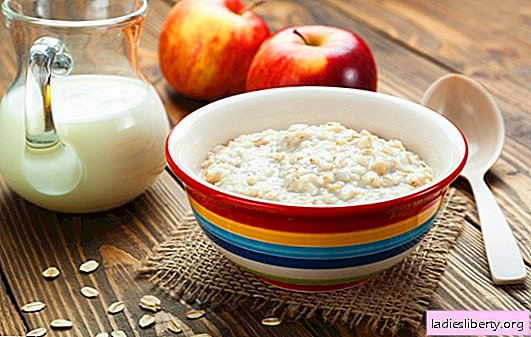
Clematis is a beautifully flowering vine, which is widely used in landscaping of the garden. It hides the unsightly appearance of buildings and decorates fences. Very elegant clematis looks along the arbors and on the arches. If the plant is properly looked after and transplanted in a timely manner, then the attractiveness of clematis will not fade.
Clematis transplant dates in the fall
Experienced gardeners know that clematis does not like frost. If you tighten the timing of the transplant, it can die even in a relatively warm winter.
In the northern regions, where the climate is particularly severe in winters, clematis is transplanted in the spring. In autumn, clematis can be transplanted only in warm climates, where winters are milder.
It is necessary to carry out the procedure in warm weather, when there are no night frosts yet. The optimal deadline is the end of August - the beginning of October.
When planning a clematis transplant, you need to remember that in spring the plant wakes up early, so it is preferable to carry out all the work in the fall.
General rules for clematis transplant
1. Choose a sunny and warm place for creepers. Clematis does not tolerate strong gusts of cold wind. Shoots are so fragile that they can break.
2. In addition, excess moisture is detrimental to clematis. Its root system does not tolerate stagnation of moisture, so the place for planting the plant must be chosen dry with a deep occurrence of groundwater.
3. You should also take into account the size of an adult plant and allocate a large area for the vine. The fact is that with age, clematis grows greatly, braiding everything around.
4. The soil for plant transplantation needs fertile and loose. Preferably alkaline reaction.
Detailed instructions for transplanting clematis in autumn + photo
The first step is to select a site and establish support on it under the vine. It must be strong to withstand long shoots with flowers and buds.
Next, you need to build a landing pit. It is made rather deep, approximately 60 * 60 * 60 cm. At the bottom of the hole, drainage is arranged. To do this, use improvised materials: broken brick, shards, rubble remains. After that, the drainage is covered with a layer of fertile soil mixed with mineral fertilizers. You can also make humus or rotted manure for planting. Next, the hole is covered with earth and left until the moment of planting.

A plant that needs a transplant must be carefully dug up. It is important not to upset the roots of the liana and the integrity of the earth coma. To deepen the roots when planting a vine, you need 15-20 cm.
Important! Only young plants can be transplanted; they take root more quickly in a new place.
During transplantation, a mound is formed in the center of the hole, on which the plant is placed. The roots are neatly spread and sprinkled with earth. It is well tamped.
After transplanting, the soil around clematis can be mulled, which will facilitate the process of caring for the plant. With the onset of resistant frosts, the transplanted plants are additionally covered with dry foliage, spruce spruce branches or agrofibre. In the early spring, the liana is opened and annual flowers sown under it. They prevent burns and young shoots of clematis.
How to transplant adult clematis in the fall?
The process of transplanting an adult plant is not very different from planting clematis, but some features still exist.
1. The root neck of the plant must be deepened 5 cm lower than before.
2. The depth of the landing pit depends on the length of the grown roots.
3. If the roots of the plant are too long, they must be trimmed. In addition, in order not to upset the balance of clematis, shoots should be shortened. In this case, rooting will be faster and more prosperous.
4. After transplanting, the vine should be regularly watered.
5. If, after transplanting, the plant wilts and dries, then it is necessary to compact the soil under it, water it abundantly.
When autumn transplantation of creepers, it is important to pay attention to the place, soil composition and preparation of the pit. It depends on these conditions whether the plant will be accepted or not. In addition, deepening the root neck will help grow a lush bush. If you plan to plant several plants, then between them you must leave a distance of about 1.5 meters.
Clematis care after transplantation
After the transplant, the liana needs especially careful care.
• Regular watering at least 1 time per week. If the weather is hot, then the frequency of watering is increased.
• Constant loosening of soil and weeding of weeds. If the soil is mulled, then care is facilitated.
• Organic fertilizing twice with an interval of 14 days.
Immediately after the transplant, fertilizer clematis is not necessary. If the landing pit was prepared according to all the rules, then until spring the plant will have enough nutrients. Further feeding is carried out according to the schedule, as for all perennial plants.
On heavy soils, it is necessary to dust the lower part of the plant with wood ash, which reduces the risk of wilting. On light structural soils, this dusting is not done.
Preparing for winter: proper pruning and clematis shelter
Clematis pruning must be done. This is done for the duration of flowering, creating a neat appearance, distribution of shoots, updating the vine. In addition, autumn pruning is carried out after clematis transplant.
The degree of pruning depends on the variety of lianas and its biological characteristics.

In addition, clematis need reliable shelter for the winter. The shoots of the plant are afraid of not only frost, but also icing, which is detrimental to them. Therefore, the dry method is used to shelter clematis.

Important! In winter, the shoots under the shelter should remain dry, but you should not wrap the plant much. Liana may vent during a thaw.
It is forbidden to use sawdust and other materials that get wet and freeze for winter mulching. In the spring, such a shelter thaws for a long time, so it is impossible to remove it in time. This leads to the creeping of the vine.
The underground part of the plant can tolerate a drop in temperature to -40 degrees. But do not forget that flower buds appear on the shoots of last year. The flowering of clematis in spring depends on how they survive the winter.
The lowest winter hardiness is at the root neck of the plant, so the winter shelter should be thorough. Plants that are not properly covered are damaged by temperature changes. Frost frosts are not uncommon, crust on the shoots crack.
Remove the shelter from the vine very carefully when the threat of night frost is over. The fact is that some still in the fall form underground new buds that go out with the first heat.
As you can see, some troubles when transplanting clematis in the fall and in caring for it exist. But subject to all the necessary requirements, the plant will surely please with beautiful and long flowering.











